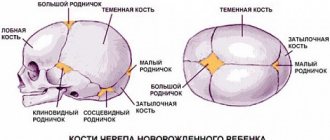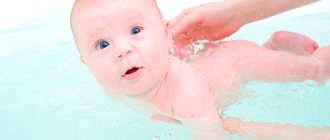Path
- Hello Tatiana. First, tell us about yourself. How did you get into this field? What was your path to it?
– Initially, I am a swimmer myself, I have qualifications, I have been interested in swimming since I was 5 years old. I can’t say that I dreamed of becoming a coach as a child. Rather, at a more conscious age, I realized what I could do. Everything happened spontaneously.
As a student, I got a job at a children's center; they wanted to hire me as an administrator. But another vacancy was opened. I indicated on my resume that I was a swimmer. Therefore, I was offered to learn how to work with small children, teach them to swim. Later, I decided that it would be great to somehow reinforce this and entered the Institute of Physical Culture and Adaptive Sports, where I already directly studied rehabilitation science, pedagogy, child psychology and other disciplines.
At this stage, I have the education of a rehabilitation specialist. I am a master's student, the author of a manual on working with people with problems with the respiratory system. I wrote it based on three years of work with a child diagnosed with cystic fibrosis. These are rare children. There are only about 7,000 of them in Russia. Many don’t even know what it is. And this experience inspired me to work through this problem. People with this diagnosis need help. They need to be brought to the masses. And today in Russia there is only a narrow circle of people who study this disease, help cope with it and bring work with such children to the required level.
As for infant swimming , there is no higher professional education in it yet. At the moment, there are various associations that accept people who already have a certain background - this could be medical education, pedagogical education, sports education, and there are also courses that allow you to develop in this direction.
Read full information about Tatyana’s education and work experience in our article “A certified trainer is the key to your child’s safety.”
Infant or early?
– You are a member of the International Association for the Support and Development of Early and Infant Swimming. How is early swimming different from infant swimming?
– Early swimming is activities for children from approximately 2 to 6 years old. Up to 2 years – this is infant swimming. This division is determined by what skills the child has and what he can do.
Aqualastica has classes for both age groups. A child can arrive at 3 months and learn to move underwater, dive, and hold his breath within a year. Or come in a year and it will take him a little more time to master, but he will also master everything.
Background
The history of early swimming in Russia begins during the Soviet Union, when in 1978, by decree of the Ministry of Health of the RSFSR, swimming pools for children's clinics began to be opened in large cities for training with briskets. Classes were then conducted according to the instructions of V.A. Guterman, developed on the basis of his experience of hardening children by swimming in ordinary clinics in the capital. As a result, in 1980 there were already 137 infant swimming schools operating.
At the same time, the active practice of infant swimming developed in France, Germany and Australia. In the late 20th century, many scientists and health professionals became interested in the potential of water to promote human health. Numerous publications began to appear on this topic, various techniques and experiments began to appear. Although for some reason large-scale studies have not been conducted.
When to start
– At what age is it better to come to swimming?
– It’s not the coach who decides. It's up to the parents to decide. Every parent feels better about their child. If the child is interested, if he likes water, then you can start at 3 months or at 2.5 months . But you need to approach this moment very consciously - why exactly does your child need to swim?
Perhaps the child has some pathologies - muscle tone, torticollis. Then in the early stages - yes, they really come to a specialist and say “we have torticollis, the doctor advised us to go to the children’s pool” or “we have muscle tone and need to relax it.” As you know, water is a universal remedy that can both relax and tense muscles. Not a single massage therapist can do what water can do together with a competent specialist who will work the muscle group that is necessary in water.
If the child is healthy, water will also benefit him. Early swimming promotes comprehensive physical development - from the motor to the speech apparatus. Those who swim begin to talk earlier, get up earlier, turn over in a timely manner, and sit up. Swimming is a developmental environment that gives the child opportunities for new types of activity.
The benefits of infant swimming
Before birth, a child spends 9 months in water, but after birth he breathes through his lungs, so water is not an environment where he feels safe. He cannot breathe under water and cannot stand on it on his own. Classes are beneficial if the baby is in the hands of an adult who competently controls his interaction with water.
Advantages of infant swimming:
- normalizes muscle tone - increased decreases, decreased increases, the desired effect is achieved by selecting the optimal water temperature and a set of exercises;
- during swimming, the body adapts to temperature changes, this hardens and contributes to the formation of strong immunity;
- relaxes, improves sleep;
- increases appetite;
- increases lung volume;
- psycho-emotional contact with the parent is established;
- stimulates development, the baby begins to crawl, sit, and walk earlier.
You can’t plan a massage and swimming lessons on the same day, it’s tiring for the child
Osteopaths, neurologists and massage therapists recognize the benefits of infant swimming in the treatment of diseases of the musculoskeletal system. Exercise strengthens the nervous system. With a wide umbilical ring, the abdominal muscles form . They help cure torticollis, eliminate colic, and normalize blood circulation.
Features of the program
– What are the features of swimming for children of different ages? Is the training program different in any way for 3 months, for a year, for 2 years?
– The educational process in the pool at any of these three ages is built individually . It cannot be said that if a child is six months old, then you need to do this and that with him. But there is a list of prohibitions, what you cannot do. For example, children should not be jerked sharply until they are six months old - their joints have not yet formed. Otherwise, if the child’s development is timely, everything is in order, then with each month of work with him the set of exercises becomes more complicated.
Let's say the child came at 3 months. As practice shows, at one and a half years old he can already swim 3-4 meters freely and hold his breath. This suggests that he is not afraid to make independent movements in the water. If a child arrived at one year old, it is impossible to promise him that by the same age, by one and a half years, that is, in six months, he will swim. Because he has less skill, less ability to make all these conscious movements.
What is radically different by age: if the child came early (up to 4 months), then he will not be afraid and he will be able to do a lot.
And the child who came later will have a softer approach to him and will have a slightly longer learning period. It's better to come earlier.
What do opponents of early swimming say?
Finding information about the dangers of early swimming is not so easy. There are no more studies confirming this hypothesis than there are studies on the benefits of swimming in the pool. In the vastness of the RuNet, we came across only two resources that actively encourage parents not to take their children to such classes. We won't name them. But both resources are not related to scientific or medical activities, but are associations of swimming coaches. Representatives of one of them, despite their position, nevertheless practice individual lessons with children under 4 years old.
Let's look at their main arguments.
•••
Early swimming is not swimming, but bathing, it is not a sport.
But we are not talking about sports, but rather about physical activity that is beneficial for the body.
•••
There is no scientific evidence to support the benefits of early swimming.
Yes, there are no large-scale studies, but there are local and many scientific works.
•••
There are no professional methods for such training.
There are many methods. There really is no single universal method of teaching early swimming yet. Children, including those at our school, are trained individually by trainers with higher education and specialized training courses.
•••
Early swimming creates an incorrect body position in the water; when moving to a large pool, the child will have to be retrained.
We addressed a question on this topic to our infant swimming coach Tatyana Goncharova. Her comment:
“I look at it a little differently. You can acquire the correct body position in water at any age. When a child is brought into the pool, parents do not ask that they make him an Olympic champion. They want him to be healthy. For example, a child has increased activity, sleeps poorly, and eats little. He is taken to the pool so that he normalizes his regime, reduces his physical activity, gets a little tired during training, and develops his muscles.
But this does not mean that if you have sports goals, you need to wait until you are 5-6 years old. Early swimming helps the child realize whether he needs it and whether he likes it. Children who swim from a very early age are more physically savvy than those who start at age 7 and learn swimming from scratch. Plus, any early sport instills discipline in a child and the ability to make decisions faster.”
•••
There is a possibility of harmful consequences to health - asthma, allergies, stress, epilepsy, colds and infectious diseases.
The speeches of three people are often referred to here.
The first is professor, doctor of biological sciences Sergei Savelyev
.
In his interviews, he often repeats: “ It is harmful to teach children to swim first and then walk.
Because when the brain of a small child is formed, if he is first taught to swim, he will develop stable connections between the centers characteristic of controlling movements in water. And when he is then forced to learn to walk, he will no longer walk at the expense of the archaic ancient centers of the vestibular apparatus, but at the expense of the cortex, and there will be a mismatch. Such children, especially urban ones, often end up with epileptogenic conditions and severe nervous disorders.” But judge for yourself. How can 30 minutes of swimming a day prevent the remaining 23.5 hours on land from forming the correct neural connections in an infant? Scientific works and studies confirming this hypothesis are not provided anywhere.
The second person, professor, doctor of medical sciences
Galina Kozlovskaya, in her article “Don’t make an Ichthyander out of a baby!”
gives a whole list of reasons why he considers early swimming an unnatural practice. But as we see it, her warnings are addressed to those who practice a fanatical approach. We do not set such a goal. We do not share the violent approach to learning. On the contrary, we urge you to be mindful and moderate exercise.
Arguments similar to those of Kozlovskaya are given in the article by international level trainer, scientific supervisor Galina Eltonskaya “Teaching children to swim”
. The article is also in the nature of theoretical reasoning, supported by selective statistics from conversations with one hundred mothers practicing early swimming. Nevertheless, Eltonskaya ends her critical speech by confirming that swimming is useful for serious deviations in the functioning of the central nervous system, but after consultation with a doctor. It turns out that swimming is recommended for children with weaker health, but not for those with better health? Strange.
What can we say? Yes, there are a number of contraindications for swimming in the pool. Where are they not? That is why we allow access to them only upon presentation of a pediatrician’s certificate about the child’s health. And we repeat again, classes at Aqualastica are taught by qualified trainers with higher education. We work individually with young children. And the child’s health is not only the responsibility of the coach, but also the responsibility of the parent. If you see that swimming is not suitable for your child, we will not insist on continuing training or, if desired, we will adjust the training program.
Preparation
– How to prepare your baby for his first lesson in the pool?
– If the child is very small (up to a year), then it is best to simply get used to the temperature regime . Most likely, a parent who bathes his child uses water at a temperature of 36-37 degrees to keep him as warm as possible. Small children have a very slow heat exchange, so they need to be prepared by gradually lowering the temperature of the water in the bathroom. According to SanPiN requirements, the temperature in the pool is 32-33 degrees. It is better that the child is already ready for this. And he would be comfortable in water at that temperature.
It happens that a child comes to the first lesson, the parents used one temperature at home, another in the pool, and as a result the child is stressed. The body cannot produce enough heat and the baby cries. Parents often think that the child does not like classes, but he is simply cold. In such cases, we explain that you need to try 2-3 more times for the body to adapt . But it is better when the child is prepared in advance at home.
Methods of teaching swimming to infants
The first stage takes about 60 days. At this time, the ward learns to dive, not to be afraid, and gets used to long swimming. Don't rush to sign up for the public pool. For toddlers up to three months, a regular bath filled with water at a temperature of 36 °C is quite suitable (for obese children 34-35 °C). Every week, lower the temperature by 0.5 °C, bringing it to 28 °C.
It is important not to be late with your debut lesson. In infants, the effect of breath holding persists until one month of age. The innate reflexes of swimming, walking and crawling remain a little longer.
Initially, do not be afraid to instill diving skills. The presence of a breath-holding reflex in babies under one month old is easy to check. The immersion simulation proceeds as follows. While lying on your tummy, hold your baby under the chest and chin with your right hand. Left under the clear command “Attention! Let's dive!" scoop up a handful of water and pour it onto your client’s forehead. As soon as you are sure that the baby is holding his breath when he hears the command, lower his head under the water for a moment. Keep your free hand on the back of your head.
Do not hurry! Before putting your baby's head under water, conduct a sufficient number of simulated dives (on average, 10–15 baths are enough). The baby must learn to consciously hold his breath. Then the new exercise will not be a shock to him. It is because of the impatience of the parents that the baby may get scared and scream during the next lessons.
Time
– How often and how much should babies swim?
– There is no single recommendation. For beginners and healthy children, to avoid excessive stress on the body, I recommend starting with 2 times a week for 30 minutes . If there are any disorders, for example, weak back muscles and the child needs classes, then these can be visits every other day - 3-4 times a week.
In terms of duration, the lesson lasts half an hour, because in the first 10 minutes the child gets used to it, then for 15 minutes you can do exercises with him, play and then finish the lesson. This time is optimal for him. If you take 45 minutes, then this is a lot of time for a child under 6 years old. It's hard to keep him occupied and he gets tired quickly.
Those who swim from 3 months and practice for 30 minutes 2 times a week, grow up to a year, and in the breaks they already get bored and look forward to the next trip to the pool.
To be continued. It’s better to sign up for classes now!










